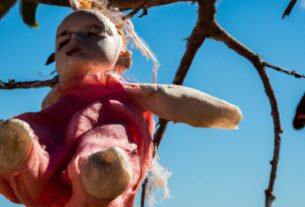Serpent sculpture has been captivating humans for centuries, thanks to its intricate details and profound symbolism. These sculptures have played a significant role in conveying cultural and religious beliefs throughout history. From ancient civilizations like the Egyptians and Aztecs to Buddhist cultures, serpent sculptures have left a lasting impression.
What Makes Serpent Sculpture Unique?
Serpent sculpture is an art form that represents serpents or snakes. The sculptures can range from small, intricate carvings to larger-than-life statues. Crafted from various materials like wood, stone, metal, and clay, serpent sculptures are known for their intricate details and profound symbolism.
The Cultural Significance of Serpent Sculptures
The historical significance of serpent sculptures spans across different cultures. In ancient Egypt, serpents symbolized rebirth and renewal, with the ouroboros, a serpent devouring its own tail, being a common motif. Greek mythology associated serpents with healing and transformation, as depicted by the staff of Asclepius, wrapped with a serpent.
Aztec culture revered Quetzalcoatl, the feathered serpent, as a prominent deity who bestowed knowledge and civilization upon the people. Serpent sculptures held a significant place in Buddhist culture, where the Naga, a serpent-like creature, protected the Buddha and his teachings.
In summary, throughout history, serpent sculpture has served as a medium for expressing cultural and religious beliefs. The attention to detail and symbolic significance of these sculptures continue to captivate enthusiasts. In the following section, we will delve into the materials and techniques employed in serpent sculpture.
Materials and Techniques Unveiled
Serpent sculptures can be crafted from a variety of materials, each offering distinct textures and colors. Here’s an overview of the different materials used in serpent sculpture:
Wood
Wooden serpent sculptures hold popularity across numerous world cultures. The natural grain of the wood adds a unique texture to the sculpture. Artists can choose between softwoods like pine and cedar, which are easier to carve but may not be as durable, or hardwoods like oak and teak, which are longer-lasting.
Stone
Stone sculptures stand as some of history’s most impressive serpent depictions. Sculptors employ various types of stone like marble, granite, and sandstone. The hardness of the stone determines the complexity of the carving process. Sculptors may choose to carve by hand or use modern tools like chisels and power tools.
Metal
Metal serpent sculptures are often made from bronze, copper, or brass. Artists employ techniques such as casting or welding to create these sculptures. Metal serpent sculptures find popularity in contemporary art, adorning public spaces and galleries.
In addition to various materials, there are multiple techniques employed in serpent sculpture:
Carving
Carving stands as one of the oldest techniques employed in serpent sculpture. It involves using a chisel or other sharp tools to remove material from the sculpture. This technique enables artists to create intricate details and textures.
Casting
Casting, a modern technique, has revolutionized serpent sculpture. Artists start by creating a mold of the sculpture using materials like clay or silicone. They then fill the mold with molten metal or resin, resulting in the final sculpture.
In summary, serpent sculptures can be crafted from a range of materials, each contributing to its unique appearance. Artists employ techniques like carving and casting to bring these sculptures to life. In the next section, we will explore the profound symbolism behind serpent sculpture.
The Profound Symbolism of Serpent Sculpture
Serpent sculptures are steeped in symbolism and meaning, serving as vessels for cultural and religious beliefs. Let’s explore some of the symbolism and meanings behind these sculptures:
Fertility
Serpents have long been associated with fertility. In ancient Egyptian mythology, the goddess Wadjet, often depicted as a serpent, protected women and children. Greek mythology linked serpents to the god of fertility, Dionysus. Serpent sculptures were prevalent in fertility rituals, believed to aid conception.
Rebirth
The shedding of the serpent’s skin has symbolized rebirth and renewal throughout history. Ancient Egyptians used the ouroboros, a serpent consuming its own tail, to represent the cyclical nature of life. The shedding process signified the shedding of the old self and the emergence of the new.
Transformation
The serpent’s ability to shed its skin and transform itself has rendered it a symbol of personal transformation. Greek mythology associated serpents with Asclepius, the god of healing, who could transform into a serpent. Serpent sculptures were employed in healing rituals, aiding individuals in transforming their lives and overcoming illness.
Cultural and Religious Beliefs
Serpent sculptures have served as carriers of cultural and religious beliefs across different civilizations. In Hinduism, the Naga, a serpent-like creature, safeguarded the Buddha and his teachings. In Aztec culture, the feathered serpent deity, Quetzalcoatl, bestowed knowledge and civilization. Serpent sculptures were widely employed in religious rituals to honor these deities and convey the culture’s beliefs.
In summary, serpent sculptures hold a rich tapestry of symbolism and meaning. From fertility to rebirth and transformation, they symbolize the cyclical nature of life. In the subsequent section, we will uncover some of the most famous serpent sculptures from around the world.
Famous Serpent Sculptures: A Glimpse of History
Serpent sculptures have left an indelible mark on the art and culture of various civilizations. Here are some of the most renowned serpent sculptures from around the world:
Quetzalcoatl
Quetzalcoatl, the feathered serpent, held immense significance in Aztec culture. Revered as a deity, Quetzalcoatl was believed to have brought knowledge and civilization to the people. The serpent was often depicted adorned with feathers, symbolizing its connection to the sky.
The Naga
The Naga, an important symbol in Buddhist culture, represents a serpent-like creature. Nagas are considered protectors of the Buddha and his teachings. Depictions of the Naga often showcase multiple heads and an expansive hood.
The Serpent Mound
Located in Ohio, the Serpent Mound is an effigy mound constructed by the Adena culture around 1070 CE. Shaped like a serpent, with its head at one end and tail at the other, the Serpent Mound is a significant Native American monument.
The Caduceus
The Caduceus, often associated with the medical profession, features a staff entwined by two serpents. This symbol has its roots in Greek mythology, where it represented the god Hermes.
The Ouroboros
The Ouroboros symbolizes a serpent or dragon consuming its own tail. It frequently appears in ancient Egyptian and Greek mythologies, representing the cyclical nature of time and infinity.
In conclusion, serpent sculptures have played a vital role in the art and culture of civilizations worldwide. The enduring symbolism and cultural significance of famous serpent sculptures continue to captivate audiences. In the following section, we will explore the direction of contemporary serpent sculpture, uncovering innovative trends.
Contemporary Serpent Sculpture: Pioneering Innovation
Serpent sculpture, an art form that has evolved over the centuries, now finds itself at the forefront of innovation. With the advent of new technologies and materials, modern artists are pushing the boundaries of this art form. Let’s explore the current trends and innovative techniques in contemporary serpent sculpture:
Materials and Techniques in Contemporary Serpent Sculpture
While traditional materials like wood and stone still find use in contemporary serpent sculpture, modern artists are also embracing new materials such as glass, plastic, and recycled materials. These materials offer greater freedom for creativity and produce unique and innovative serpent sculptures.
As for techniques, artists now combine traditional methods with modern approaches. For instance, 3D printing has opened up new possibilities, enabling artists to create intricate serpent sculptures with extraordinary detail. Additionally, computer software assists artists in designing and planning their sculptures, streamlining the creative process.
Current Trends in Serpent Sculpture
One notable trend in serpent sculpture is the use of abstract forms. Modern artists are exploring fresh perspectives by representing serpents through abstract shapes and forms. This trend injects creativity into the traditional representations of serpents.
Furthermore, serpent sculptures find themselves integrated into public art installations. These captivating installations adorn parks and plazas, offering a unique and imaginative way to enhance public spaces and engage people with art.
In conclusion, contemporary serpent sculpture thrives on the drive for creativity and innovation. Modern artists employ new materials and techniques to create distinctive and captivating serpent sculptures. The current trends in serpent sculpture show that this art form remains relevant and continues to enthrall audiences worldwide.
Collecting and Caring for Serpent Sculpture
Serpent sculptures not only serve as beautiful art pieces but also hold value as collectibles. Whether you are a collector or a custodian of a serpent sculpture, it is crucial to handle these works of art with care. Here are some tips to guide you:
Collecting Serpent Sculpture
When collecting serpent sculptures, it is essential to familiarize yourself with the artist and the era of the sculpture. Conduct thorough research to understand the value of the piece. You can find serpent sculptures at antique stores, art galleries, and online marketplaces. Before purchasing, inspect the sculpture carefully for any damage or repairs, as the condition can affect its value.
Caring for Serpent Sculpture
Proper care is crucial to preserve the pristine condition of your serpent sculpture. Here are a few tips to help you care for your sculpture:
- Keep your sculpture away from direct sunlight and extreme temperatures.
- Regularly dust your sculpture with a soft, dry cloth.
- Avoid using harsh chemicals or cleaners on your sculpture.
- Store your sculpture in a cool, dry place when not on display.
If your serpent sculpture requires repair or restoration, it is best to seek the assistance of a professional. They possess the knowledge and expertise to restore your sculpture without causing any damage.
In conclusion, collecting and caring for serpent sculptures can be a rewarding experience. By following these tips, you can ensure that your sculpture remains in excellent condition for years to come. Thank you for reading this article on serpent sculpture. Stay tuned to TooLacks, your go-to source for nature, gardening, and animal news.


